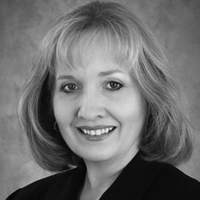Question
I am currently working with a number of children with Down Syndrome who demonstrate Class III malocclusion and many phonological/articulation errors paired with jaw sliding and lack of tongue/jaw differentiation. I am well versed in the lack of efficacy
Answer
My theoretical viewpoint is that speech and language must always be communicative and functional with all clients, but particularly with children. Therefore, I would not recommend engaging in any type of speech or drill-type exercises at the phoneme or nonsense syllable level. Those simply aren't communicative and therefore, not socially reinforcing. While you would likely get some jaw stabilization with a bite block you may create some additional problems, such as abnormal tongue carriage. Furthermore, the many discrete steps in generalization of the phoneme to co-articulated speech, then going through all the steps again without the bite blocks, and then again generalizing to other contexts are not very efficient. A quick and cursory literature search demonstrated very little mention of bite blocks in the journals past the late 1980s and early 1990s. As far as myofunctional exercises, ASHA's viewpoint is that one must have the training and skills necessary to implement successful myofunctional therapy (www.asha.org/docs/html/PS1991-00103.html.) If you elect to go this route, I would encourage collaboration with the student's dentist regarding anatomical constraints and possible contraindications due to the Class III malocclusion.
Instead I would recommend therapy focused on using the target phonemes in a functional manner while incorporating multi-modality cues such as gestures, phonemic placement, Visual Phonics cue, Phonic Faces cards, etc. You did not mention what the specific speech sound errors were, but for the purpose of example, let's suppose the error is /k/. I would set up an interactive activity such as "baking a carrot cake" in which the target words were "bake, cake, cook, carrot, cool, etc." I would model, recast, offer two choices, etc. all while using multi-modality cues any time /k/ was produced. Additionally, since you mentioned that some of the errors were phonological in nature, I would recommend using minimal pairs as a means of elucidating the phonological differences in the phonemes. Minimal pairs can also be incorporated into play. Finally, you could cue the student to open the mouth a little wider than usual for production of target phonemes in words and to use the tongue to make the sounds, not the jaw. Mirror feedback may be helpful. Remember that the goal is increased intelligibility too. The articulation may not be particularly smooth or "pretty" (with extraneous jaw movement present), but if the end result is improved intelligibility then progress has been made.
Pamela Terrell, Ph.D., CCC-SLP is an assistant professor at the University of Wisconsin-Stevens Point. Her areas of clinical and research interest are child language disorders, literacy, and cleft palate/craniofacial disorders.

